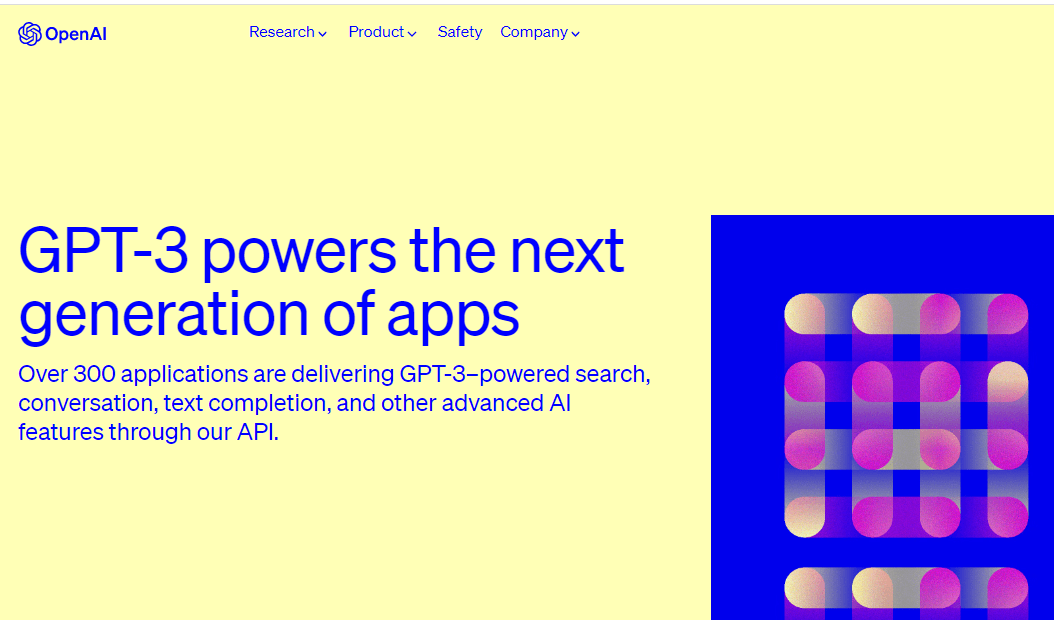Last updated on April 16th, 2024 at 03:36 pm
Insights Index
ToggleUnderstanding GPT-3: Applications and Business Impact
GPT-3 is a powerful language model that can be leveraged for various use cases. This article explores the different versions of GPT-3, it’s API, applications and the business impact.

What is GPT-3?
Generative Pre-trained Transformer 3 is a language model developed by OpenAI that can perform natural language processing tasks such as language translation, question-answering, and text summarization. It is one of the most powerful language models available in the market, and it has the potential to revolutionize the way we interact with computers.
Why is it Important?
It is a powerful language model that can generate human-like text. It can be used to develop chatbots, virtual assistants, and other conversational interfaces. With GPT-3, developers can create natural language applications without spending hours writing code.
Use Cases:
Chatbots and Virtual Assistants : GPT-3 can be used to develop chatbots and virtual assistants that can answer questions and perform various tasks.
Content Creation : To generate content for blogs, articles, and other written materials.
Translation : It can be used to translate text from one language to another.
Text Summarization : To summarize long texts into shorter, more readable formats.
Business Applications:
Healthcare : It can be used to develop chatbots that can assist patients with medical advice and symptom diagnosis.
Marketing : To generate content for social media, blogs, and email campaigns.
Finance : It can be leveraged to analyze financial data and generate reports.
According to the OpenAI, over 300 apps are using GPT-3 across varying categories and industries, from productivity and education to creativity and games. These applications utilize a suite of it’s diverse capabilities. A few of these include:
Fable Studio is creating a new genre of interactive stories and using GPT-3 to help power their story-driven “Virtual Beings.”
Viable helps companies better understand their customers by using GPT-3 to provide useful insights from customer feedback in easy-to-understand summaries.
Algolia uses GPT-3 in their Algolia Answers product to offer relevant, lightning-fast semantic search for their customers.
Versions:
There are different versions of GPT-3 available, which vary in terms of the number of parameters used. The most common version of GPT-3 consists of 175 billion parameters. The higher the number of parameters, the more powerful the language model. These models can be leveraged for different business applications.
According to the OpenaAI documentation, The GPT-3 model family consists of four versions: Ada, Babbage, Curie, and Davinci. Each version has unique strengths and capabilities, which determine its suitability for specific tasks.
Davinci is the most capable model, able to perform any task the other models can perform and is best suited for applications that require a lot of understanding of the content, like summarization for a specific audience and creative content generation. Additionally, it excels in understanding the intent of text and solving complex logic problems.
Curie, on the other hand, is extremely powerful and fast and is best suited for tasks like language translation, complex classification, text sentiment, and summarization.
Babbage is suitable for straightforward tasks like simple classification and semantic search classification. Ada is usually the fastest model and can perform tasks like parsing text, address correction, and simple classification.
How to Leverage GPT-3 API?
The API provides developers with access to the language model, allowing them to integrate GPT-3 into their applications. To leverage this API, developers need to sign up for an API key, and they can start building their applications.
Business Impact:
The emergence of the GPT-3 language model has undoubtedly created a significant buzz in the business world. This cutting-edge AI technology, developed by OpenAI, has opened up new possibilities for businesses across different industries.
Furthermore, GPT-3 has the potential to streamline various business processes, from data analysis to content creation. The model can be used to analyze large datasets and extract insights, enabling businesses to make more informed decisions.
Additionally, It can be used to generate high-quality content, such as articles and reports, which can save businesses significant time and resources.
However, while GPT-3 has enormous potential, there are also some limitations to consider. For instance, the model may generate incorrect or misleading responses, especially when it encounters topics it is not familiar with. It might also exhibit biases that can affect the accuracy and fairness of its responses.
Another limitation is the cost of implementing it. While the technology has the potential to generate significant cost savings in the long run, the initial investment required to develop and deploy GPT-3 solutions can be substantial. Moreover, the scarcity of access to the technology and the high costs of using it may limit its availability to small and medium-sized businesses.
Conclusion:
GPT-3 has the potential to revolutionize the way businesses interact with customers, streamline various business processes, and generate significant cost savings in the long run. However, to fully harness its potential, businesses must carefully consider its limitations, including its potential biases and the cost of implementation. With careful planning and execution, It can be a valuable asset for businesses looking to stay ahead of the competition in the ever-evolving digital landscape. source
Expand your knowledge further with these recommended articles on related AI subjects: ChatGPT, InstructGPT, ChatGPT Whisper API, GPT-3 Vs InstructGPT, GPT-4, ChatGPT Plugins, ChatGPT Function Calling

